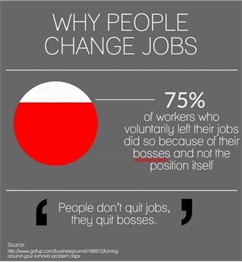It doesn’t take a rocket scientist to understand the importance of employee retention to an organization’s success. Employees are the ones who interact with customers, develop new products, and drive sales. When retention rates drop, the costs to an organization increase because it costs more money to train new employees than it does to keep existing ones. Every time an employee leaves, there is a period of adjustment as the remaining employees cover the workload and a new hire is brought up to speed. This can lead to decreased productivity and lower morale. In addition, happy employees lead to satisfied customers, increasing sales and profitability. And when employees feel valued and supported, they are more likely to be productive and perform well. Given the importance of this matter, it is essential to understand which factors affect employee retention.
Despite the importance of employee retention, we are in the aftermath of what has been coined the “Great Resignation”. In November 2021 – resignations hit a record high of 4.5 million workers quitting their job and was followed up in December of 2021 with 4.3 million more. The impact has been significant on the global economy, with nearly 11 million open positions existing and only just over 6 million new hires. If you ask people why they are leaving their jobs – many of them will let you know they are choosing life, but it goes much deeper than that.
Reasons Employees Leave
Think back to all the times you have left a job. How many of those times did you leave because you found a better opportunity? What does a better opportunity even include? More money? Opportunities for advancement? Better management? Which factors most affected employee retention at your workplaces?
The Pew Research Center’s recent survey shows exactly why employees leave their jobs. Interestingly, those who quit in 2021 cited that it was low pay (63%), no opportunities for advancement (63%), and feeling disrespected at work (57%). Other factors cited included a lack of childcare, lack of flexibility, poor benefits, too many hours, and too few hours. One area not given enough attention in this survey though was how leadership impacted employee’s decision to leave.
Impact of Leadership on Employee Retention

At the end of the day, much of improving employee retention comes down to leadership. You have probably heard it before; employees don’t leave jobs; they leave bad managers. Although this may be an oversimplification of the complex nature of employee attrition, there is certainly some truth to it. During our 20 years of providing leadership development training to companies and individuals across the globe, this fact has remained constant. In fact, in one of our most popular leadership workshops, Leadership Foundations, we have shown some iterations of the graphic to the left, which shows workers voluntarily leave their jobs because of their bosses and not the position itself. In this example, it is a whopping 75% reported by Gallup. Most alarming is that after 20 years, people still largely leave their jobs because of their boss.
So how do we change it? First, we must understand what employees want in a leader. In 2018, The Predictive Index conducted a survey of 5,100 respondents across industries to understand employee perceptions of what makes a good or bad manager. For example, the survey found that 77% of employees rated their bosses poorly and planned to leave their company within 12 months, whereas only 18% of those who rated their managers high planned to go. Additionally, the survey report examined the top ten traits of good managers, and these included:
- Strong work ethic
- Honesty
- A sense of human
- Confidence
- Positive attitude
- Makes good decisions
- Recognition for a job well done
- Is passionate
- Highly knowledgeable
- Good grasp of the entire business
Conversely, the traits common to those rated as bad managers included the following:
- Doesn’t communicate expectations clearly
- Plays favorites
- Doesn’t show concern for my career & personal development
- Badmouths people behind their backs
- Isn’t open or interested in feedback
- Wants to prove themselves right
- Isn’t self-aware
- Betrays trust
- Doesn’t listen
The truth is that employees who feel respected and valued by their leaders are far more likely to stay with a company for the long term. Furthermore, effective leaders know how to create an environment that is both challenging and supportive, two essential ingredients for employee satisfaction. By acting with integrity and being emotionally intelligent, leaders are more likely to inspire loyalty in their employees. In short, the way a leader treats their employees can have a profound impact on employee retention. Leaders can positively impact employee retention by creating a positive, empowering environment.
If good leadership is the answer to employee retention, what do we do?
Leaders must learn to create an environment where everyone, including managers, feels a deep sense of trust and cooperation. Many of the traits listed that belong to bad managers are often a result of those managers not having the right resources, training, or even space to grow as leaders.
One of the primary ways companies can develop their leaders to improve employee retention is by investing in leadership training. Leadership training enhances confidence, teaches strategies and techniques to improve communication, gives the tools needed for better decision-making, and helps leaders and employees manage conflict and change better.
Through leadership training, managers gain a better understanding of their strengths and weaknesses, helping them be more self-aware and receptive to feedback from others. Additionally, leadership training gives managers a safe space for learning about and practicing their leadership skills.
Going one step-further, leadership training should not be restricted to those who already hold leadership positions. In a survey of 1,000 senior-level leaders, it was discovered that two of the top concerns included the organization’s ability to develop the next generation of leaders and attract and retain top talent. Companies can address these concerns by providing leadership training to all employees as a proactive measure. Leadership training can significantly impact employee performance and retention as it sends the message that the company is invested in their employees’ personal and professional development (an issue many employees cite as a reason not to stay). Ultimately, leadership training leads to improved employee performance by equipping employees with the skills and knowledge they need to be successful leaders.
Peregrine is committed to helping employees and leaders reach their full potential through practical leadership development and training. Get your free copy of the Leader’s Guide to begin your leadership journey.
FREE Leader’s Guide

Peregrine is committed to helping employees and leaders reach their full potential through practical leadership development and training. Get your free copy of the Leader’s Guide to begin your leadership journey.
Need leadership development? Check out our comprehensive portfolio of online leadership, business, and workplace skills courses and programs. Each course and program are 100% online so you can develop leadership skills from any location and at your pace.


